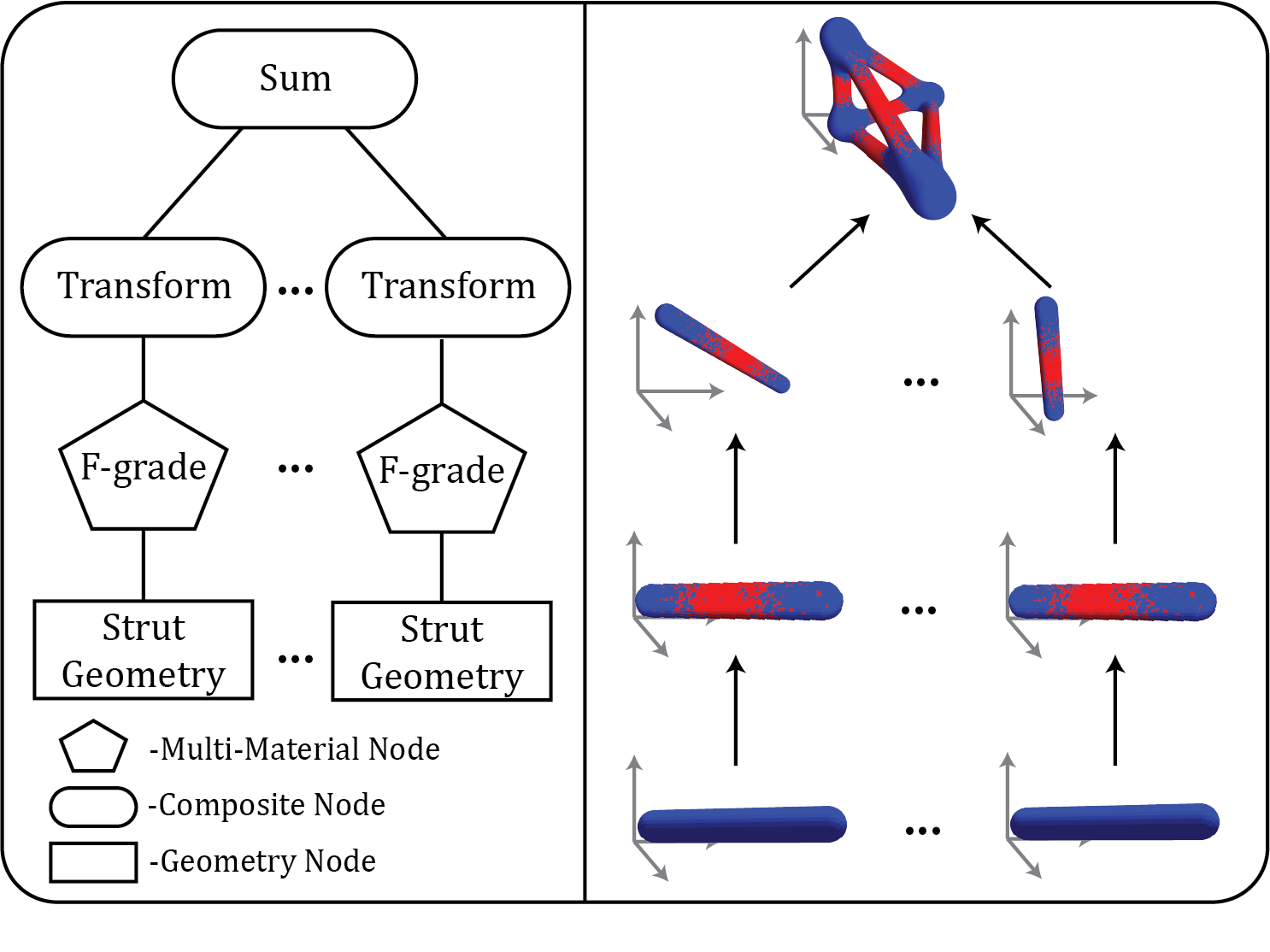Lattice Structures - MacCurdyLab/OpenVCAD-Public GitHub Wiki
A key application of functional grading is with lattice structures. OpenVCAD can be used to create lattice structures and apply complex material grades. Lattice structures are a type of geometric structure that are composed of a set of struts. Struts are cylinders with rounded caps at each end. Struts are drawn from points A to B. The radius of the strut is specified by a parameter. A blend factor can also be used to control how the shape is blended in a scalar field. The lower the blend parameter, the more the strut will be blended into the surrounding geometry. Multiple struts can be combined with the sum node to create organic lattice structures.
Example: Building a Tetrahedron
The example below shows a network that generates an organic tetrahedron with graded members. Component geometry is defined as individual unit struts along the x-axis. The struts are then functionally graded to form a meta-material where the center (shown as a red material) exhibits better compression resistance when compared with the blue material at the ends. The struts are transformed and combined via a summing operation to yield a composite tetrahedron.

Example: Automatic Generation of an Organic Tetrahedron Lattice Structure from a Mesh
The previous example can be extended to build a network of tetrahedrons that form a lattice. The strut geometry for the object below object was generated by first performing a 3D tetrahedral meshing of a rectangular prism. For each edge in the tetrahedral mesh a strut is generated and two overlapping normal distributions are applied to functionally grade materials together. A sum node is used to combine all of the struts into a single composite object. This highlights a composite lattice structure who's mechanical properties could be optimized using functional grading. For example, a designer could tweak the concentration of an energy absorptive material material graded into the center of the strut. Similarly, architecting the concentration of stiff materials in certain struts could yield a compliant mechanism the deforms more under load in certain areas of the design.
